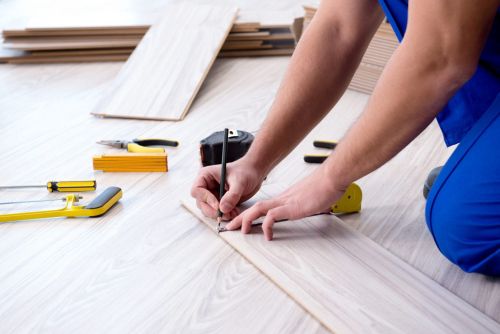
Hardwood flooring is one of the most popular flooring materials for centuries. This is due to its natural charm that gives your home a unique personality and beauty.
The trees that hardwood is harvested from grow really slow, making it very dense and durable.
This kind of flooring can last for generations. Having this in mind, we come to the question, “How do I know that it’s time to replace my hardwood flooring?”
Here are signs to watch out for that could tell you that it’s time to get new flooring:
Spring, spongy or soft spots. Hardwood floors will begin to decay after a certain period of time giving your floor these undesirable qualities. If you have these on your flooring, this might be caused by decay or rotting because of moisture. Moisture that gets between the subfloor and the flooring can cause problems over time. Appliances that leak, groundwater intrusion, condensation, and even moisture from a concrete subfloor that had not completely dried can introduce moisture to your flooring.
Peeling, Buckling or Cracking. These are not normal qualities of hardwood flooring and could be a sign of water damage. Water damage can also cause Warped or uneven floors. If the subfloor is affected, there could be visible sagging or drooping. If that happens, replacing the subfloor should also be considered.
Scratches. Minor scratches may not be an issue and can easily be fixed by googling a DIY repair remedy for those. But then as time goes by, hardwood floors can also start to significantly lose their shine and color.
Sunlight, dirt and grime all contribute to floors losing their beauty. If you have solid hardwood floors, you can refinish it. But repeated refinishings can only do so much and it will become expensive!
This requires sanding the floor, slightly degrading the quality of your flooring after each refinishing. A quality hardwood floor can be sanded down and refinished at least 6-10 times before you need to replace it.
Gaps and Movement. During cold weather, you will notice gaps between the boards getting bigger, this is due to the temperature change. This is normal. In the winter, the air loses moisture. This causes the wood to also lose moisture, making it shrink, resulting in gaps, or “cracks,” between boards. However, extreme movement between your floorboards is a tell-tale sign that there is an issue and you should be considering replacing your floor.
Hardwood floors do not have expiration dates, but they have a lifespan and replacement is inevitable. It may be hard for you to let go of your old floor. It is understandable to feel sad when replacing a part of your home that you’ve had for decades. It stood as witness to a lot of fond memories for you and your family.
However, changing your perspective on the situation might make it easier. Look at this as an opportunity to give your home a new look. Style it according to the dream home you’ve always wanted.

